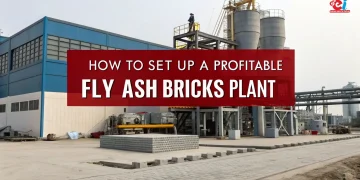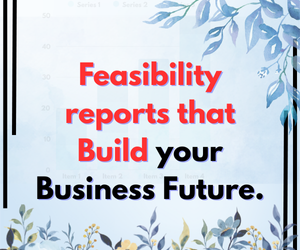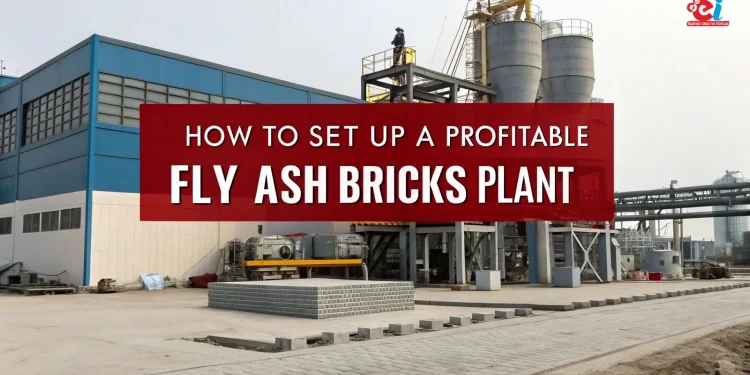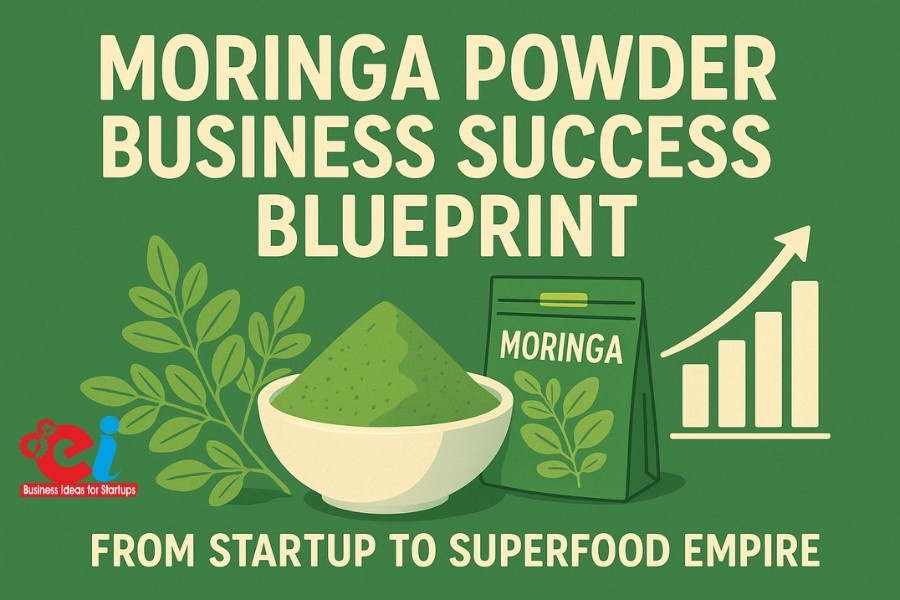Introduction
In a globalized world that is more focused on sustainable development, the fly ash bricks plant has become a leading example of green construction. Originated from thermal power plants that are coal-fired products, these bricks do not just reduce the environmental impact of disposal of fly ash, but also provide greater quality, consistency, and energy efficiency when compared to clay-based units. For entrepreneurs–whether seasoned in the pharmaceutical sector or new to manufacturing–establishing a fly ash bricks plant represents an opportunity to capitalize on a booming market while advancing eco-friendly practices. This article guides you step-by-step through the various aspects of creating profitable operations, starting beginning with understanding market dynamics and making sure materials are secured to mastering the process of production as well as ensuring compliance with regulations and preparing your product for longevity.
The Business Case for Fly Ash Bricks Plant
Fly ash bricks transform industrial waste into an extremely valuable construction material. In contrast to kiln-fired clay bricks, their production is energy-efficient and requires little because curing takes place at room temperature. This results in a brick that exceeds or matches the standards of conventional strength and durability of its compressive properties while decreasing carbon emissions and conserving fertile topsoil. Additionally, their weight is lighter, which reduces transport costs and speed up the masonry process which can result in cost savings throughout all stages of the production chain.
Pharma-focused entrepreneurs will see similarities between their quality control frameworks as well as the exact management that fly-ash brick manufacturing requires. Laboratory protocols used to test active pharmaceutical ingredients can be repurposed for rigorous material analysis–determining optimal particle sizes, moisture content, and binding characteristics that influence brick performance. This expertise in technology becomes an edge that allows a new player to ensure quality and consistency that will appeal to the largest construction companies and green builders too.
Related: Flyash based Value Added Products
Market Dynamics and Forecast
In the coming decade the market for fly ash bricks plant is set to grow rapidly due to global urbanization and increased regulation to promote sustainable construction. In India the fusion of incentives from the government, green building initiatives, and the constant demand for affordable housing is the basis of the forecast Compound Annual Growth Rate (CAGR) of about 12.5 percent between 2025 and 2030. Key infrastructure projects–ranging from metro rail extensions to smart-city developments–mandate the use of eco-friendly building materials, bolstering domestic consumption.
Internationally markets across Southeast Asia, the Middle East as well as Africa are also taking on Fly ash-based bricks. Rapid growth of urban areas in these regions leads to an equal increase in demand globally, with the market predicted to reach 7 billion dollars in 2030, up from USD 3.8 billion by 2024. This growth is supported by the stricter environmental regulations like carbon trading schemes and green certification requirements that favour the use of low-emission building materials. Competition will be a mix of established brick makers that are shifting towards fly ash blends as well as new small-scale players, making distinctions in the quality of service, product, and positioning of the brand.
Raw Material Strategy
The core of any efficient fly ash bricks plant is a strong process for obtaining raw materials. Fly ash must be procured from thermal power stations which operate within acceptable transport distances – ideally between 50 and 80 kilometers to minimize the logistics cost. The establishment of multi-plant supply agreements is essential to reduce the risk of the varying composition of ash. Consistency in silica and Alumina content, in addition to lower levels of carbon that have not been burned is the foundation for a reliable brick’s strength and consistency when setting times.
Other ingredients like lime and cement act as binding agents, thereby activating the pozzolanic qualities of fly ash, resulting in stabilized calcium silicate and hydrated hydrates. Sand–often required in modest proportions–improves workability and reduces shrinkage, while micro-quantities of gypsum enhance early-age strength development. All of these substances must be tested thoroughly at a lab on site before being incorporated into the mix of production. Monitoring the moisture levels and particle size distribution and chemical impurities in real-time makes sure that every batch meets strict quality standards which allows production to continue without a worry about output that is not in line with specifications.
Plant Layout and Workflow
Planning a plant layout with seamless material flow and minimal handling improves production efficiency. Fly ash and binder silos are situated next to the mixing area, where you can find paddle mixers of high intensity or ribbon blenders capable of making a homogeneous mix in minutes. Conveyors move the mixture to a bank of hydraulic presses, all is calibrated to produce pressures of between 100 to 200 kg/cm2 to make bricks with exact dimensions. The pressing zone has to be located centrally and have enough space to accommodate both automated and manual mold-changeover processes.
Curing yards are enclosed, but a ventilated area is nearby. With misting systems and steam-injection rigs that maintain humidity levels of at least 95%, the bricks are subjected to the curing process that usually takes between 10 and 14 days, contingent on the conditions. Integrating a quality control lab close to the curing zone allows immediate testing and sampling–compressive strength tests and water absorption analysis and dimensional tests–so that any deviation from the Indian Standard IS:12894 may be addressed prior to the large-scale delivery.
The bricks that have been completed are sent to the dispatch area via an automated conveyor-and-pallet system. Forklifts or automated vehicles (AGVs) control the stacking and loading process, which ensures speedy turnaround of orders to construction sites or distributors. A careful zoning of raw materials arrival production curing, testing and dispatches not only minimizes cross-contamination, but also reduces the distance that materials travel within the plant, which reduces overall handling costs as well as the possibility of injury.
Manufacturing Process in Detail
The production of top-quality Fly Ash Bricks Plant takes place by a series of interlinked processes:
- Material Batching
The accuracy of weighing is crucial. Batching systems with digital load sensors ensure fly cement, sand and other additives are added in exact proportions. Monitoring in real-time of these inputs feeds into a central manufacturing Execution System (MES) which alerts the operator to any deviations that are outside of the tolerances. - High-Intensity Mixing
After being batched, the materials are placed in the high-shear mixing chamber, in which blades or paddles distribute the powders equally. The process can last from between three and five minutes, triggering the initial hydration reaction and creating a moldable mass. The integrated moisture sensors control the amount of water added, preventing overor underwatering, which could cause damage to the brick’s integrity. - Compression Molding
The mix is transported through hydraulic presses. Modern presses, with PLC controls and programmable pressure cycles, reduce the mix to a level of between 100 and 200 kg/cm2. A single press could produce between 2500 and 5,000 bricks an hour, depending on the mold dimensions and cycle times. Automated processes for demolding and mold lubrication mechanisms improve the speed of operations and reduce wear. - Curing
Bricks freshly pressed are moved into curing racks. In dry, hot environments, fogging or misting systems ensure that relative humidity is over 95%, whereas in cooler climates steam injection or steam chambers with enclosed steam are the preferred method. In the course of curing, which is roughly two weeks – the bricks gain their full compressive strength typically at or above 8 MPa, enough to support loads. - Quality Assurance
A team of experts conducts compression strength tests with hydraulic testing equipment to ensure that bricks exceed or meet those of the 7.5-10 MPa limit. Water absorption is assessed by submerging the samples and recording weight gain that should be kept below 15 percent. Vernier calipers are used to ensure that the bricks are within +-2 millimeter tolerances. Only bricks that have passed all tests are allowed to be packaged. - Packaging and Logistics
Bricks are packed on pallets and are protected by air-tight covers to protect against the ingress of moisture. Logistics coordination–whether through in-house fleets or third-party carriers–ensures timely delivery aligned with construction schedules. The use of GPS tracking and digital order management systems allow for transparency and help reduce disputes regarding the status of the shipment.
Related: How to Manufacture Fly Ash Bricks in India: A Complete Guide for Industrial Entrepreneurs
Regulatory Landscape and Quality Standards
The Indian regulatory framework requires careful consideration of the labor and environmental laws. In the Air (Prevention and Control of Pollution) Act plant owners have to install dust collection devices like bag filters or cyclones that capture the fugitive emissions that occur in the process of mixing and transfer of material. The effluents from curing yards, although not a lot, must be treated according to the Water (Prevention and Control of Pollution) Act to eliminate suspended solids prior to disposal or reuse.
Following BIS guidelines (IS:12894) assures that bricks will meet the specified compressive strengths and water absorption limits and sizes. Integrating a solid Quality Management System -ideally certified to ISO 9001– increases credibility and is a crucial element when bids are made for major public or private projects. Safety regulations in the Factories Act ensure machinery safeguards in place, as well as adequate ventilation, and training for workers in handling heavy equipment as well as fine particulate material, which reduces risks to workers.
Human Resources and Skill Development
A fly ash bricks plant is dependent on the skill of its employees. Engineers who are skilled in process automation oversee mixers, presses and curing controls to ensure the highest quality of production. Laboratory technicians run physical and chemical tests and interpret the results to improve the mix’s designs and curing processes. Operators who have been trained in hydraulic press operation and fundamental maintenance will ensure that the machine is running at a high level of efficiency. In addition, logistics coordinators oversee supply chains by scheduling deliveries of raw materials and coordinating dispatches to the schedules of customers.
Insisting on continuous training that covers new methods of handling materials and safety protocols that are updated and the ever-changing standards for quality–pays dividends in productivity and decreases the amount of time spent on the amount of downtime. Cross-training employees, for example, teaching lab technicians the basics of press operations, allows for flexible staffing during peak demand or maintenance of equipment.
Go-to-Market and Sales Strategy
A successful fly-ash bricks business builds strong relationships with property developers as well as government agencies. Promoting your product as an eco-friendly and high-performance option is a targeted marketing strategy that includes attending green building expos and publishing reports on the project’s successes and collaborating with the construction industry to prove conformance with LEED and other sustainable standards.
Direct sales teams develop accounts with big contractors, providing brick tests on site and performance guarantee. Additionally, a system of dealers and distributors in regional areas facilitates the expansion of smaller markets, which ensures availability even in towns with a remote location. SEO-friendly websites should feature the technical datasheets, applications scenarios, and caps on customer reviews, while digital advertisements should target specific keywords such as “fly ash bricks supplier” and “sustainable construction materials.”
Intelligent pricing models such as volume-discount levels for bulk orders or loyalty programs that reward repeat customers–help to build long-term relationships. Offering services that add value, such as joint quality audits for projects or free technical workshops for masons makes your company stand out and increases confidence.
Sustainability and Corporate Citizenship
Fly ash bricks are made by their very nature is a supporter of circular economy principles. To increase your green credentials, you should implement a zero-waste strategy that recycles the water that is pumped out of the curing yard to reuse for mixing processes. Utilize renewable energy sources, such as rooftop solar panels to provide power to lighting for the plant and other equipment, decreasing dependency on grid electricity as well as decreasing environmental impact of the business.
In partnership with local municipalities, you can offer bricks made from fly ash for communities or affordable homes shows corporate responsibility and builds goodwill. Monitoring and reporting on important sustainability metrics like tons of fly ash removed from landfills, and percentage reduction in CO2 emissions, etc. can qualify you for incentives from the government as well as tax rebates and green certifications, which further increase the appeal of your business to buyers.
For more detailed information check out the below videos
Leveraging Expert Consultancy: NPCS
The process of ensuring that your venture’s success begins by ensuring that you have a solid feasibility and plan. Niir Project Consultancy Services (NPCS) provides Market Survey cum Detailed Techno Economic Feasibility reports that are tailored to the fly ash bricks industry. The comprehensive reports cover every aspect of manufacturing process design and optimization of raw materials design, plant layout, and the financial consequences. With NPCS’s help entrepreneurs are able to gain clarity over potential market opportunities and operational requirements, making to make informed decisions and reduce the risk of a project as they evaluate the possibility of establishing an entirely new business.
Which business to start? How to choose a business idea?
Conclusion
Setting up a fly-ash bricks manufacturing plant is profitable and a socially responsible venture, as it transforms industrial by-products into high-performance construction material. By leveraging your expertise in process control–particularly if you hail from the pharmaceutical sector–you can ensure consistent quality and compliance with rigorous standards. An integrated approach that includes an efficient sourcing strategy for raw materials as well as efficient plant layout careful manufacturing processes, strict regulations compliance, and targeted marketing will set your company for long-term expansion. In conjunction with a commitment to sustainability, and the strategic guidelines of the feasibility reports from NPCS Fly bricks project can bring environmental benefits as well as high economic returns in a rapidly growing global market.
Begin your green manufacturing adventure today and lay the foundation for a company built on the principles of a better Earth.


























